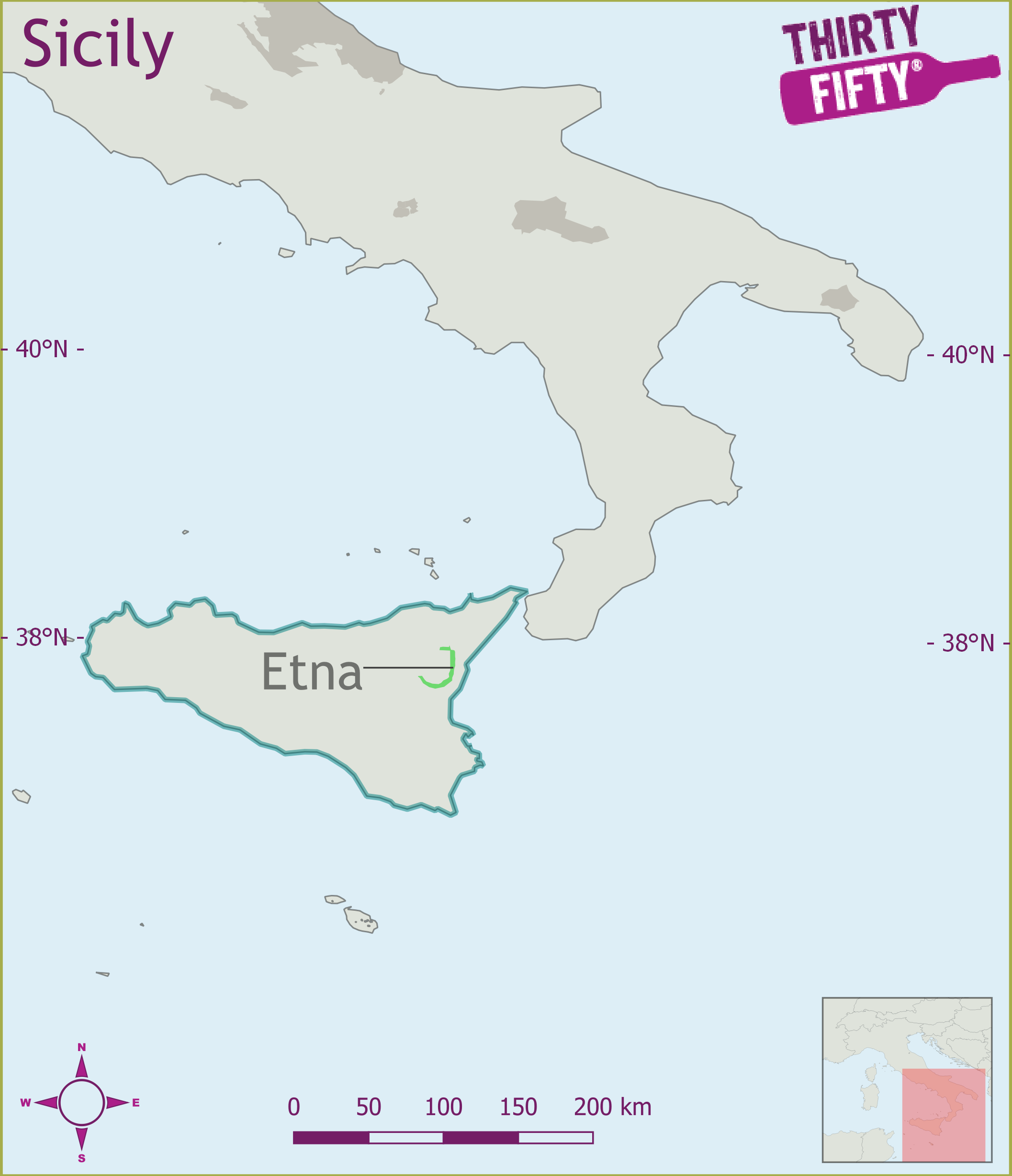Etna vineyards blanketed in snow
Is the snow a bad thing for Etna vineyards? Read more »
BOOKINGS: 020 8288 0314
Jancis Robinson described Chardonnay as the tart of the grape world, as it would lie down anywhere and do what the winemaker told it to do! In other words it will grow almost anywhere and produce decent and quite stylistically different wines ranging from minerally Chablis, Champagne, buttery fruit wines, tropical fruit wines or oaky vanilla wines. During the late 1990's Chardonnay was the drink of choice for many. However people became bored with the oaky wines found in so many bars and the term, 'ABC' (Anything but Chardonnay) came about. The ubiquitous yet noble Chardonnay grape has virtually become a brand name. From its homeland in Burgundy, its fame and fortune have taken it all over the world. It�s grown on different soils in varying climates to be used either as a single varietal or in blends, for still and sparkling wines, and with or without oak ageing to create a wide range of wines with diverse personalities. As a result, it�s impossible to describe a typical Chardonnay. For a start, the grape can make anything from an everyday glugger to a high-quality wine deserved of ageing. Its popularity in the vineyard stems from the fact that it�s easy to grow, consistently yielding generously with relatively high sugars (and, therefore, alcohol). In the winery its advantages are obvious � it�s difficult to make a poor wine from it, unless it�s been picked too late, because then its acid levels fall quickly, which make it flabby. Chardonnay isn�t strongly aromatic: some detect anything from apples (or barely ripe apples in Chablis) and melon in Maconnais Chardonnay to tropical fruit flavours in New World examples. Common descriptives, however, tend to refer to texture and weight rather than flavour � buttery for broader styles, such as Meursault from the Cote de Beaune; steely for Montrachets and nutty for Corton-Charlemagne. There�s an attractive leanness to fine Cote d�Or white burgundy, that sets it apart from Chardonnays from the rest of the world, but this can be emulated further south in the Cote Chalonnaise and Maconnais in good vintages with clever winemaking.
The grape variety Nero d'Avola is certainly not as familiar as Chardonnay or Merlot but that could change as this little-known indigenous grape of Sicily gains in popularity. It is literally 'the black grape of Avola' and is Sicily's premier native grape. Avola is a wine-growing village in Southeastern Sicily, where the variety evolved through selection by vine growers centuries ago, and from where it has spread throughout the island. It makes rich, spicy and velvety red wine that's easy to drink but that can take a bit of aging. As recently as the 1980s, plantings of Nero d'Avola declined in Sicily as many growers switched to international grape varieties. But now Nero d'Avola is coming back as the grape earns a growing reputation in its own right. It is often produced as a varietal wine but also blended with Cabernet Sauvignon or Syrah. Like most Sicilian wines, Nero d'Avola is best with food.
Shiraz and Syrah are the same grape. However apart from Australia where it is always called Shiraz, and France where it is Syrah, the rest of the world tends to follow the style of these two. If the wine is ripe and full bodied the wine is often called Shiraz. If the wine has less fruit, more acidity and lower alcohol, it tends to be called Syrah after the wines produced into the North of Rhone. Shiraz/Syrah is produced by itself or can be blended typically in three ways. A small amount of the white grape Viognier can lift the deep flavours of Syrah, this is common in Northern Rhone. In Southern Rhone and recently Australia, blending has been based around adding Grenache and Mourvedre, copying the blending behind Chateauneuf-du-Pape. Even more recently Cabernet Sauvignon and Shiraz/Syrah has been blended in the Southern French wine region of Languedoc, creating big wines with elegance. Hotter climate Shiraz often has aromas of plum, tar and leather and with the right oak treatment even chocolate. Cooler climate Syrah can have a peppery note to the wine.
PDO's & PGI's
Key Grape Varieties: Chardonnay, Nero d'Avola, Syrah

Sicily is the largest island in the Mediterranean and has one of the most ancient winemaking cultures in the world, dating back to 7th Century BC. Its wine industry is undergoing massive change with new players entering the market and producers upgrading their vineyards and winemaking to compete internationally. Sicily is actually the largest of Italy's provinces and has the biggest area under vine.
The island has 1400 km of coastline but is largely covered by hills and mountain ranges, including the snow capped Mt Etna, the famous 10,000 foot active volcano. On these mountains and on the hills between them there are areas with relatively cool but very sunny growing conditions, which are not unlike the cool climate regions of Australia. Wine is also grown in the hotter coastal regions to the west & south of the island. All in all, Sicily is a great place to grow grapes! There is little rain, spring frost is rare, as is hail. With the help of irrigation in some parts, the vines thrive in the regular, dry, warm climate.